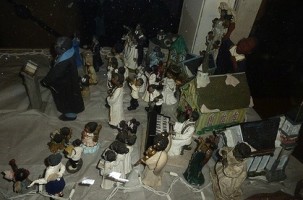 I recently had a conversation with a colleague about how arts organizations can develop relationships with new communities. I went in to my pitch for first identifying potential “ambassadors” and then establishing advisory groups to carry some or, ideally, the bulk of the load. His response made my head spin.
I recently had a conversation with a colleague about how arts organizations can develop relationships with new communities. I went in to my pitch for first identifying potential “ambassadors” and then establishing advisory groups to carry some or, ideally, the bulk of the load. His response made my head spin.
His initial comments, especially to the advisory board concept, were extremely negative. When I pressed him about that it became apparent that his feeling was based on extensive experience that advisory groups were almost exclusively employed as “window dressing” to pretend that input is being sought or give the appearance of reaching beyond the walls of the institution without really having to do anything differently. He quickly realized that his unconscious negative reaction was not rooted in the concept of advisory groups but in his experience with them being created and employed disingenuously.
If arts organizations are going to develop relationships with new communities, they have to talk to them. They have to talk to them and do new things or do some things differently as a result of those conversations. Advisory groups (or whatever you want to call them) are one means of doing so, once enough trust is established for community members to be willing to participate. But going in, there must be a willingness to move, a willingness to allow those with whom we are developing a relationship to have an impact on our work.
The colleague with whom I was speaking is deeply committed to making substantive connections between arts organizations and communities. The fact that his immediate reaction to creating groups with which to develop relationships was negative says much that is not good about arts organizations’ potential to nurture new relationships. If arts organizations’ use of advisory groups is truly so tied to tokenism as to make that an unconscious assumption, we are in trouble. Plus, it’s just incredibly depressing. (Uff da–Norwegian for oy vey, sort of–as my ancestors would have said.)
Going forward, maybe we should use another name. If advisory group is too tied to exploitation or window dressing we may need to call them something else. I’ve discussed story circles before. That doesn’t really get to the heart of it. Other suggestions? Otherwise, we will need to reclaim “advisory group” by creating ones that have impact.
Engage!
Doug
Photo:![]()
![]() Some rights reserved by A.Currell
Some rights reserved by A.Currell
